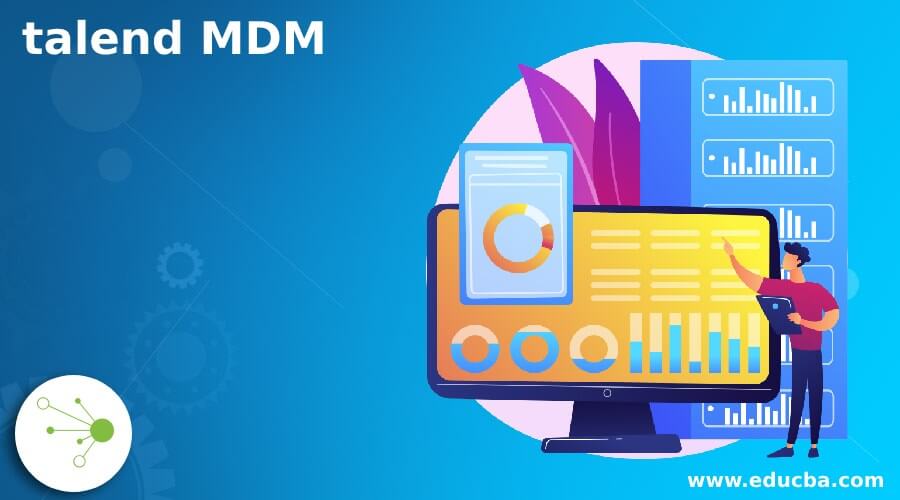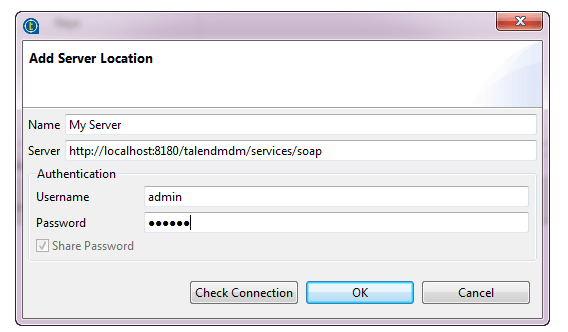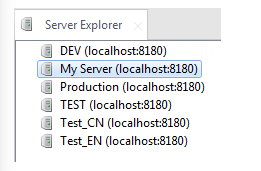Updated March 15, 2023
Introduction to Talend MDM
The following article provides an outline for Talend MDM. Here MDM stands for Master Data Management; this data always represents the up to data for an organization. It also ensures the organization makes decisions based on the data and works with the latest data; this record or data is often termed the ‘golden record.’ This process is the most complex process to manage. However, it should provide us with reliable data because based on this data, only they will be going to make the decision, so Master Data Management, or MDM in short, represents the standard definition of the data and helps us describe and define the core business entities. In this article, we will discuss the working and internal implementation and the benefits of using MDM in detail for better understanding and clarity.
What is Talend MDM?
As we have already seen, it helps us provide reliable data and can be used to make any important business-critical decisions. This Master data contains the core business entities’ which does not include the reference data, which directly refers to the dataset which can be used to classify the other data. Let’s take a closer look at what MDM is all about;
1) This is a model-driven solution, non-intrusive which the business can easily adapt for their implementation and needs.
2) Basically, it is created to serve or handle the Master data or all types of organizations; also, data hosted on a different system can be of different formats.
3) So MDM helps us to club or group the Master data of the company into a centralized hub.
4) and this repository provides us by using the Data models.
5) Also, it provides us with various core features that the user will need, such as event triggering, full-text search, advanced modeling, role-based security, model-driven dynamic web interface, and many more. This helps us to completely integrate the data throughout the organization.
Steps of Talend MDM with Examples
Here is a simple example that will show us how to use MDM; let’s get started with the below steps;
1) For this, we will use the Talend Studio, a parameter and administrative tool for the MDM; it is a graphical user interface that runs as an eclipse plug-in.
2) Steps required to create the MDM server,
Producer:
a) First, we will specify the MDM server location by clicking the Server Explorer panel,
b) Inside the name field, enter the name of your MDM Server, and inside the Server, mention the MDM Server link, which will help you to connect to your MDM Server. It follows one structure which is given below;
e.g. :
http://[address of server]:[port number]/talendmdm/services/soap
c) Now enter the user name and password; here, the user is admin, and the password is Talend.
d) You can also check the share password option; it will help you share your password for every connection without entering it again and again.
e) Now, the final step is to press OK to ensure everything is fine, and you will connect to the MDM Server.
Result:
If we are devolving the MDM solution, then we can maintain one or more MDM servers; this can be done with the help of Talend studio; the above-mentioned steps can be repeated n number of times or the MDM server you need. If you want to connect to the specific server, then in Server Explorer, just choose from the list; then you will connect to the one you want to.
Strategy master data architecture
In this, we talk about the functional architecture of the MDM, which helps us to understand the working of this in detail; also, MDM architecture is broken down into the different functional blocks that help in the interaction between the MDM hub and users with their corresponding IT needs. Let’s take a closer look at the different types of functional blocks we have in MDM architecture, which is as follows;
1) Client Block
2) Server Block
3) Repository
4) Database
<image>
Client block: this client clock consists of multiple Talend studio and web browsers that can be running on the different or same machine. With the help of the Talend, studio administrator can operate or set up the repository, which will be the master data repository here. After that, building data models and these data models help in data rules that create a single copy of the master data. After this, the final master data will be sent to the source or the target system. This studio also includes the rule that who can create, read, update or delete the models which are necessary for the data.
Server block: As the name suggests, this helps manage and monitor the master data, and it consists of MDM servers, where we monitored and governed the master data.
Database: As the name suggests, this will contain the data, so this functional block of the MDM architecture includes the MDM databases, which helps us store our master data that the organizations can further use to make decisions based on that.
Repository: Inside the repository, it stores the master data, which helps the business to make the decision for the organization. It also contains the or club the master data of the organization to a central hub.
Benefits of talent MDM
In this section, we will see the benefits of using MDM, few of them are mentioned below;
1) It helps us group or club the master data of the company into a central hub.
2) It provides us with various features such as
a) Role-based security
b) Event triggering
c) Advanced modeling
d) Model-driven, dynamic web interface
e) Full-text search option.
3) It is also a non-intrusive and model-driven process that can easily be adaptable to fulfill the business needed and for quick implementation.
4) Also, it includes the additional features such as
a) Governing
b) Mastering
c) Data integration throughout the organization.
Conclusion
As we have seen in the whole article, which includes the benefits, architecture, and use of MDM. Go through the whole article and understand the work in detail. It helps developers to understand this better and with clarity.
Recommended Articles
This is a guide to Talend MDM. Here we discuss the working and internal implementation and the benefits of using MDM in detail for better understanding and clarity. You may also have a look at the following articles to learn more –





